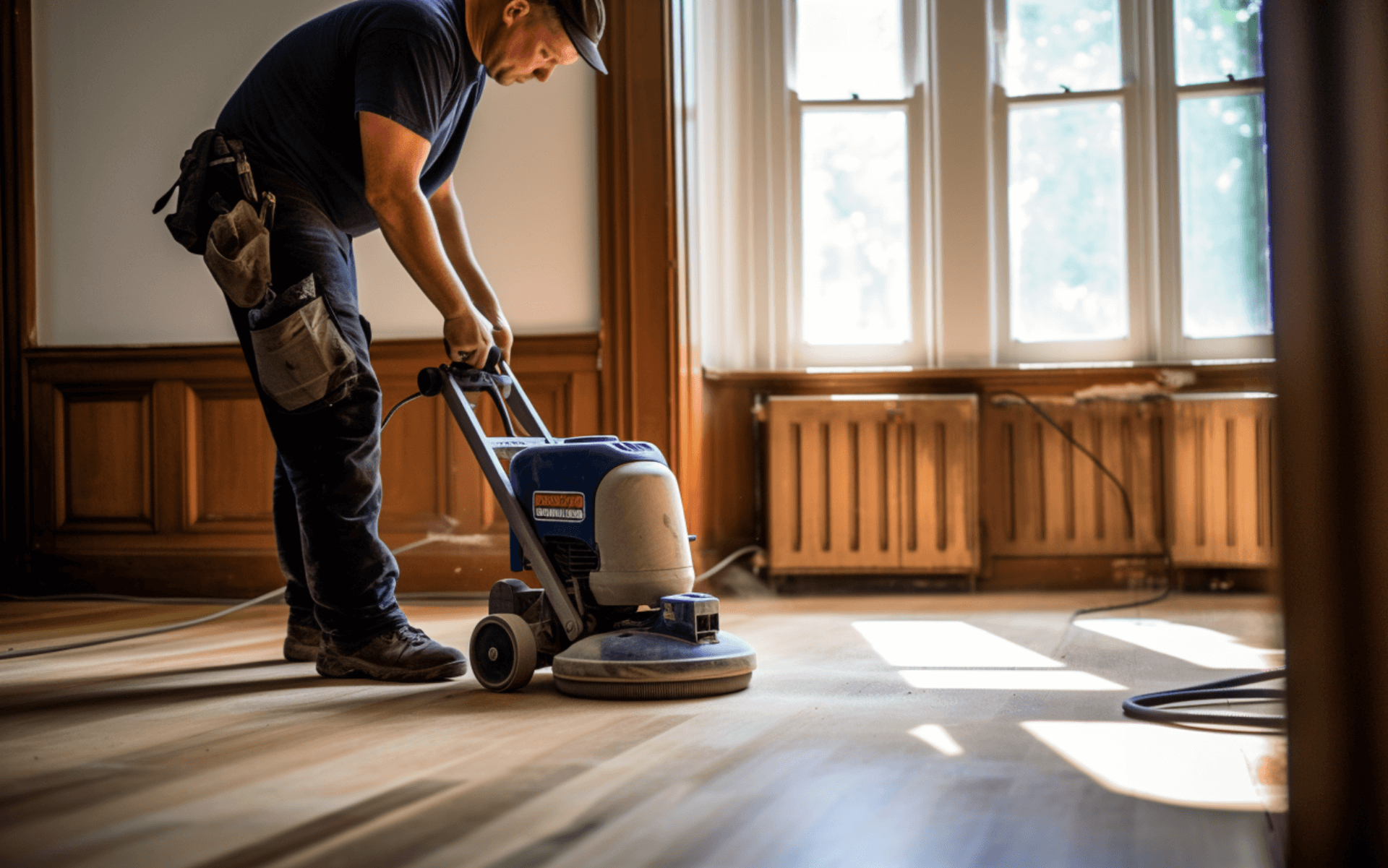Introduction: Understanding Wooden Floor Sanding Services in London
Wooden floor sanding is the process of removing the top layer of a wooden floor to restore its original beauty and condition. It is an important part of maintaining wooden floors and can help to extend their lifespan. The process involves using sanding machines and techniques to achieve a smooth and even surface, and applying a finish to the floor that enhances its appearance.
The key benefits of wooden floor sanding include improved aesthetics, increased durability, and improved air quality. Sanding removes any scratches, dents, and imperfections, restoring the original beauty of the floor. It also helps to protect the floor from further damage, making it more durable. Additionally, sanding helps to improve air quality by removing dust and debris that can accumulate over time.
Wooden floor sanding services are becoming increasingly prevalent in London. With the rise in popularity of wooden floors, more and more homeowners and business owners are looking for professional services to help maintain and restore our floors. Professional sanding services can provide a high-quality finish, using the latest sanding machines and techniques to achieve a smooth and even surface. We also prioritize safety considerations and follow manufacturer recommendations for the sanding equipment and products used. By opting for professional wooden floor sanding services, homeowners and business owners can ensure that our floors are properly maintained and restored to our original beauty.
The Science Behind Wooden Floor Sanding

Wooden floor sanding is the process of removing the top layer of a wooden floor to restore its original beauty and condition. It is an important part of maintaining wooden floors and can help to extend their lifespan. The process involves using sanding machines and techniques to achieve a smooth and even surface, and applying a finish to the floor that enhances its appearance.
Sanding removes any scratches, dents, and imperfections, restoring the original beauty of the floor. It also helps to protect the floor from further damage, making it more durable. Additionally, sanding helps to improve air quality by removing dust and debris that can accumulate over time.
There are several different types of wooden floor sanding techniques. The most common technique is drum sanding, which uses a rotating drum to sand the floor. This technique is effective for removing deep scratches and imperfections. Edge sanding is another technique that is used to sand the edges of the floor, which are often difficult to reach with a drum sander. Orbital sanding is a more gentle technique that is used to remove minor imperfections and prepare the floor for finishing.
When installing UFI, it is important to ensure adequate cross-ventilation is given to the floor. This can be achieved by removing bricks, providing additional external vents, or tapering insulation to maintain the original ventilation rate. Proper ventilation is crucial to prevent decay from rising moisture and maintain the overall health of the wooden floor.
Preparing Your Floor for Sanding: A StepbyStep Guide

Preparing your wooden floor for sanding is an important step in the process of restoring its original beauty and condition. To ensure a successful sanding project, it is essential to take the necessary steps to prepare the floor for sanding. This includes clearing the room, cleaning the floor, and inspecting the floor for any existing damage or imperfections.
The materials and tools needed for the preparation process include a vacuum cleaner, broom, dustpan, and a damp cloth. It is also important to ensure that the sanding machines and products used are of the highest quality and meet the manufacturer’s safety recommendations. Additionally, if replacing at least half a floor, it is important to check the manufacturer’s technical information to ensure the materials used for insulation under the timber floor are appropriately certified and suitable for using as UFI.
To ensure safety during the preparation and sanding process, it is important to wear protective clothing, such as a dust mask, goggles, and gloves. It is also important to ensure that the room is well ventilated and that any electrical cables or pipes are identified and avoided. Additionally, it is important to ensure that the sanding machines and products used are of the highest quality and meet the manufacturer’s safety recommendations.
By following these steps and using the necessary materials and tools, you can properly prepare your wooden floor for sanding. This will help to ensure a smooth and even surface and a successful sanding project.
Choosing the Right Sanding Machine for Your Wooden Floor

Choosing the Right Sanding Machine for Your Wooden Floor
Sanding machines are an essential tool for restoring the original beauty and condition of a wooden floor. There are several different types of sanding machines available, each with its own advantages and disadvantages. It is important to choose the right sanding machine for your floor type and condition to ensure a successful sanding project.
Drum sanders are the most common type of sanding machine and are used to remove deep scratches and imperfections. They are powerful and effective, but can be difficult to control and can cause damage to the floor if not used correctly. Edge sanders are used to sand the edges of the floor, which are often difficult to reach with a drum sander. They are more precise and easier to control than drum sanders, but are not as powerful. Orbital sanders are a more gentle technique that is used to remove minor imperfections and prepare the floor for finishing. They are easy to use and provide a smooth finish, but are not as effective at removing deep scratches and imperfections.
When choosing a sanding machine, it is important to consider the type of floor and the condition of the floor. If your floor is in good condition and only requires minor touch-ups, an orbital sander may be the best option. if your floor has deep scratches and imperfections, a drum sander would be more suitable. Edge sanders are ideal for sanding the edges of the floor and reaching tight spaces.
Consider the advantages and disadvantages of each type of sanding machine to choose the one that best suits your floor type and condition. It is also important to ensure that you have the necessary skills and experience to operate the chosen sanding machine properly. If you are unsure, it is recommended to seek professional help from a wooden floor sanding service.
The Art of Sanding: Techniques and Best Practices

The Art of Sanding: Techniques and Best Practices
Sanding wooden floors is an art form that requires skill and precision to achieve a smooth and even surface. There are several different sanding techniques available, each with its own advantages and disadvantages. Choosing the right sanding technique for your floor is essential to ensure a successful sanding project.
Drum sanding is the most common technique and is used to remove deep scratches and imperfections. It is powerful and effective, but can be difficult to control and may cause damage if not used correctly. Edge sanding is used to sand the edges of the floor, which are often difficult to reach with a drum sander. It is more precise and easier to control than drum sanding, but is not as powerful. Orbital sanding is a more gentle technique that is used to remove minor imperfections and prepare the floor for finishing. It is easy to use and provides a smooth finish, but is not as effective at removing deep scratches and imperfections.
When choosing a sanding technique, it is important to consider the type and condition of your floor. If your floor is in good condition and only requires minor touch-ups, orbital sanding may be the best option. if your floor has deep scratches and imperfections, drum sanding would be more suitable. Edge sanding is ideal for sanding the edges of the floor and reaching tight spaces.
To ensure effective sanding, follow these best practices:
-
Prepare the floor: Clear the room, clean the floor, and inspect for any existing damage or imperfections. This will ensure a smooth and even surface.
-
Use the right sanding machine: Choose the appropriate sanding machine for your floor type and condition. Follow the manufacturer’s recommendations for the equipment and products used.
-
Wear protective clothing: Protect yourself by wearing a dust mask, goggles, and gloves. This will prevent inhalation of dust and protect your eyes and hands.
-
Ensure proper ventilation: Keep the room well-ventilated during the sanding process to minimize dust and fumes. Open windows or use fans to improve air circulation.
-
Sand in the direction of the grain: Always sand in the direction of the wood grain to achieve a smooth and even finish.
-
Gradually progress through grits: Start with a coarser grit sandpaper and gradually progress to finer grits for a smoother finish. This will help to remove imperfections and create a polished surface.
By understanding the different sanding techniques and following these best practices, you can achieve a beautifully restored wooden floor that adds beauty and value to your home or business.
Finishing Your Wooden Floor: Techniques and Tips
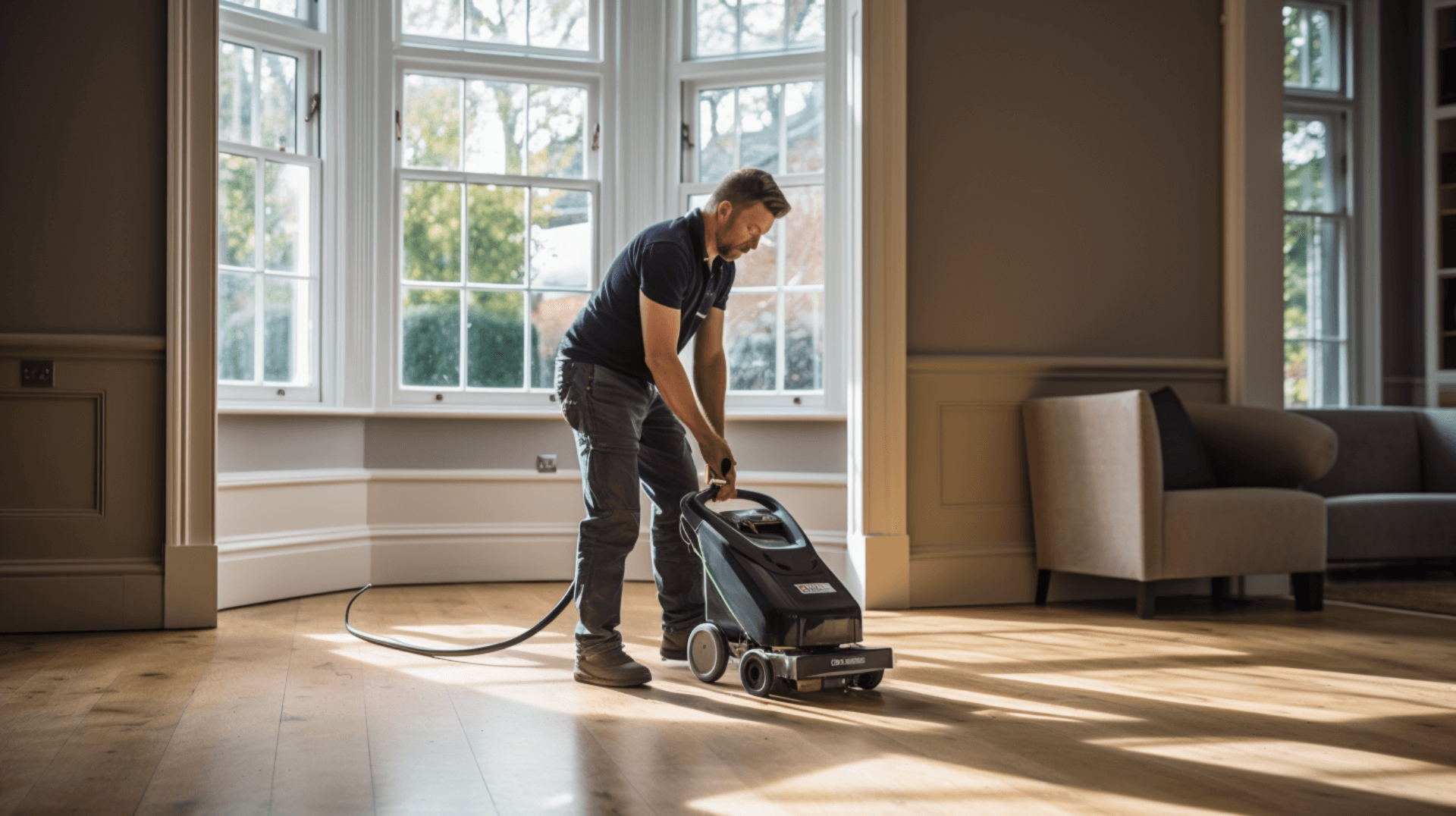
The most common finishing techniques for sanded wooden floors are oil, lacquer, and wax. Oil is a natural product that penetrates the wood and provides a subtle, matte finish. It is easy to apply and maintain, but can be difficult to repair if damaged. Lacquer is a synthetic product that provides a glossy finish and is more durable than oil. It is easy to apply and maintain, but can be difficult to repair if damaged. Wax is a natural product that provides a subtle, matte finish and is easy to apply and maintain. It is also the most affordable option, but is not as durable as oil or lacquer.
When choosing a finishing technique, it is important to consider the type and condition of your floor, as well as the ambient conditions in the space surrounding the flooring system. If your floor is in good condition and you want a subtle, matte finish, oil or wax may be the best option. If you prefer a glossy finish and durability is a priority, lacquer may be the better choice. It is also important to consider the maintenance requirements and the ability to repair any potential damage in the future.
To ensure a smooth and durable finish, here are some tips:
-
Prepare the floor: Clean the floor thoroughly and ensure it is free from dust and debris before applying the finish.
-
Follow the manufacturer’s instructions: Read and follow the instructions provided by the manufacturer for the specific finishing product you are using. This will ensure proper application and optimal results.
-
Apply thin, even coats: Apply the finish in thin, even coats to avoid streaks or unevenness. This will help achieve a smooth and uniform finish.
-
Allow sufficient drying time: Allow each coat to dry completely before applying the next coat. This will ensure a strong and durable finish.
-
Consider additional protective measures: Consider using protective pads or furniture coasters to prevent scratches and damage to the finished floor. Regular maintenance, such as sweeping or vacuuming, can also help prolong the life of the finish.
By considering the type and condition of your floor, choosing the right finishing technique, and following these tips, you can achieve a smooth and durable finish for your sanded wooden floor.
Hiring a Professional vs DIY: Making the Right Choice
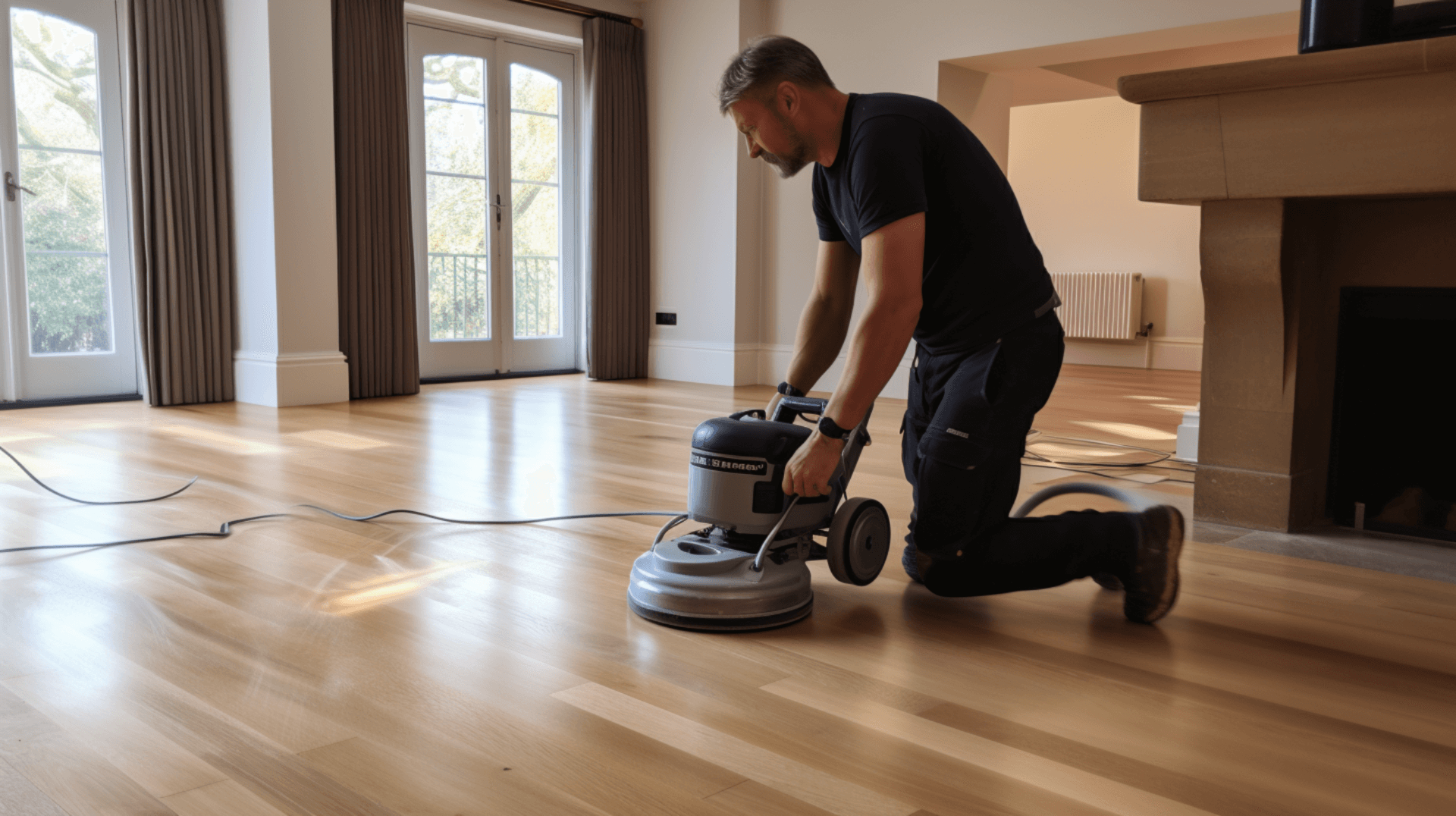
Hiring a Professional vs DIY: Making the Right Choice
When deciding whether to hire a professional sanding service or do it yourself, there are several factors to consider. First, consider the condition of your floor and the type of finish you want. If your floor is in good condition and you want a subtle, matte finish, DIY sanding may be the best option. if your floor has deep scratches and imperfections, or you want a glossy finish, hiring a professional sanding service may be the better choice.
Second, consider the cost and time involved. Professional sanding services can be expensive, and the process can take several days to complete. DIY sanding, on the other hand, can be done in a fraction of the time and cost.
Third, consider the safety and technical requirements. Professional sanders have the knowledge and experience to ensure the safety of the sanding process and to properly install insulation and fire-resisting materials if needed. They also have access to high-quality sanding machines and products, ensuring a superior finish.
GJP Floor Sanding can help in this decision-making process. Our experienced team can assess the condition of your floor and provide professional advice on whether hiring a professional sanding service or doing it yourself is the best choice for your specific situation. We can also provide guidance on the type of finish that would work best for your floor and offer a range of sanding machines and products to achieve the desired result.
Whether you decide to hire a professional or do it yourself, GJP Floor Sanding can provide the support and expertise you need for a successful sanding project.
Understanding the Cost of Wooden Floor Sanding Services
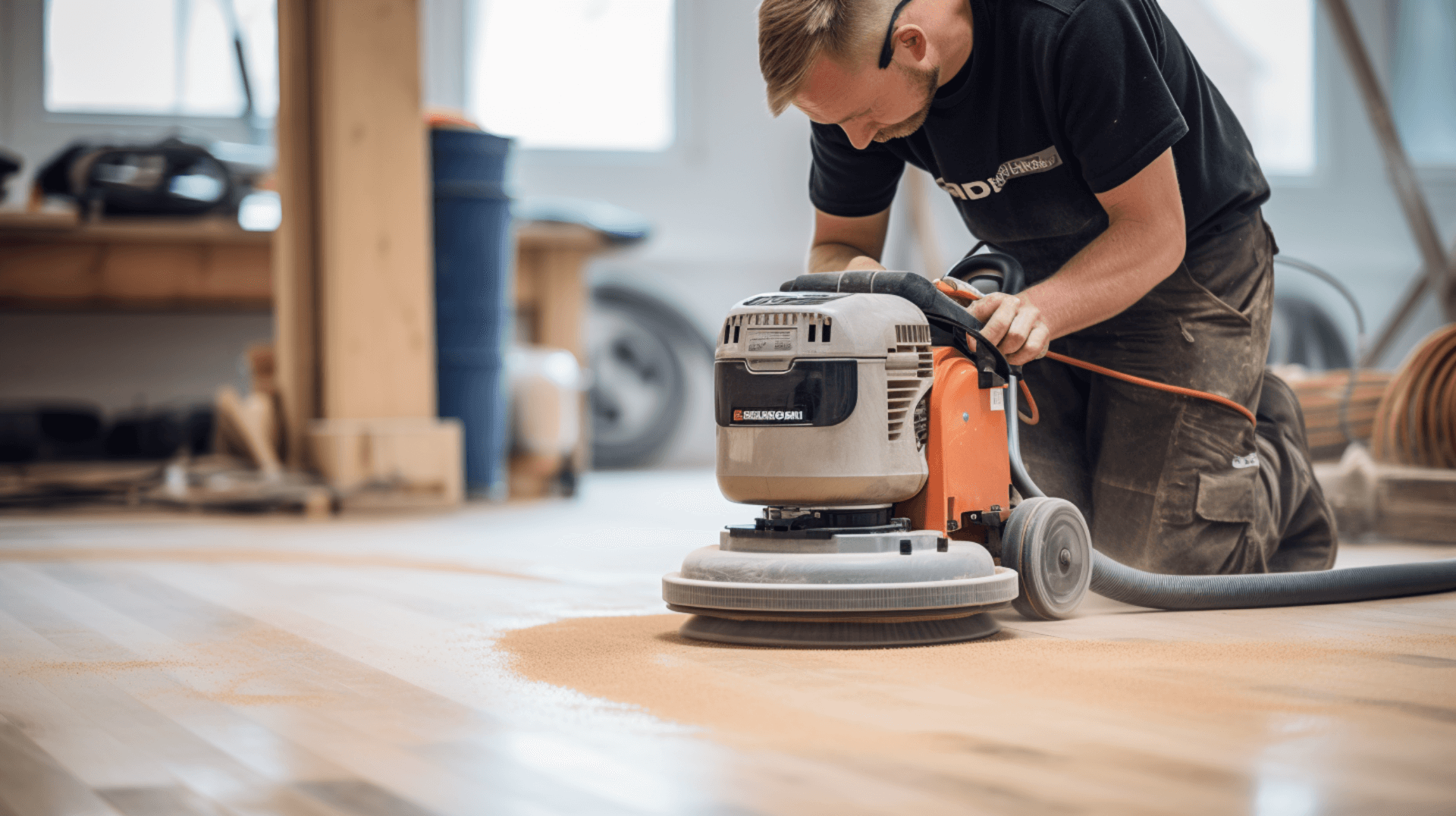
Factors that influence the cost of wooden floor sanding services include the size of the area, the condition of the floor, the type of finish desired, and the complexity of the job. Larger areas will generally require more time and materials, resulting in a higher cost. Floors that are heavily scratched or damaged may require additional sanding and repairs, which can increase the cost. Different finishes may also require different amounts of time and materials, affecting the overall cost. Additionally, if the floor has a complex construction, such as suspended timber ground floors, additional steps like installing damp-proof courses and vents may be required, which can impact the cost.
In London, the average cost of wooden floor sanding services ranges from 500 to 2,000, depending on the factors mentioned above. To ensure you are getting a fair price, it is recommended to obtain quotes from multiple companies and compare the services offered. It is important to request a detailed breakdown of the cost, including labor, materials, and any additional services. This will help you understand exactly what you are paying for and identify any hidden costs or fees. Reading reviews from previous customers can also provide insights into the quality of service provided by the company.
Choosing the Right Wooden Floor Sanding Service in London
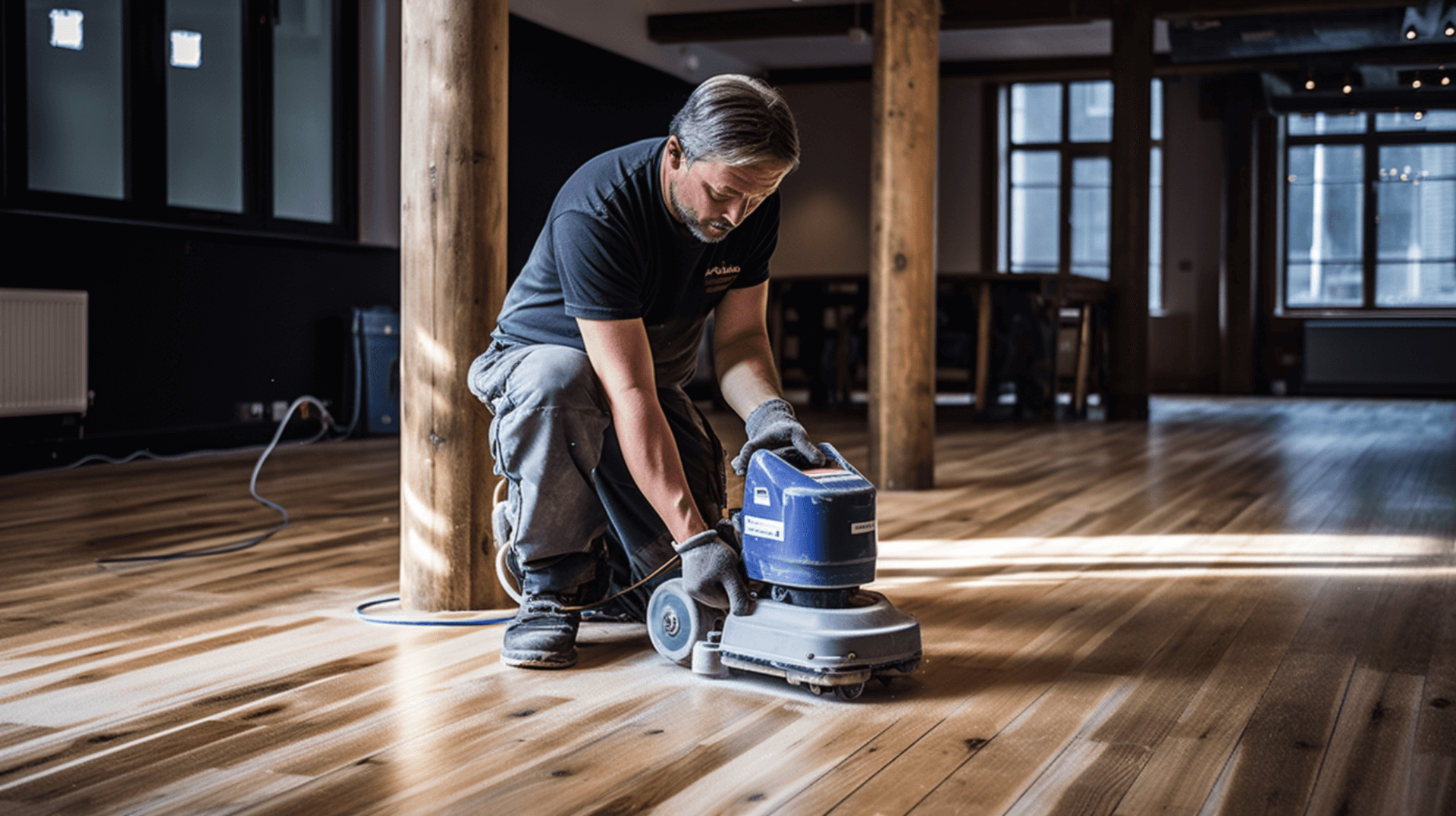
When choosing a wooden floor sanding service in London, it is important to look for a company that has the experience and expertise to provide a high-quality service. Look for a company that has a proven track record of successful projects and a portfolio of satisfied customers. It is also important to ensure that the company is fully insured and has the necessary certifications and qualifications. Additionally, it is important to ensure that the company is familiar with the complexities of suspended timber ground floors, such as the need for damp-proof courses, vents, and tapering of insulation to maintain adequate ventilation.
To evaluate the credibility and reliability of a sanding service, it is important to read reviews from previous customers and ask for references. You should also ask for a detailed breakdown of the cost, including labor, materials, and any additional services. This will help you understand exactly what you are paying for and identify any hidden costs or fees.
GJP Floor Sanding is a leading wooden floor sanding service in London. With over 20 years of experience, we have the expertise and knowledge to provide a high-quality service. Our experienced team can assess the condition of your floor and provide professional advice on the best sanding technique for your specific situation. We are familiar with the complexities of suspended timber ground floors and can ensure that the necessary requirements are met. GJP Floor Sanding is fully insured and licensed, and our staff are experienced and qualified. We have a proven track record of successful projects and a portfolio of satisfied customers. We offer competitive rates and provide a detailed breakdown of the cost, ensuring transparency and customer satisfaction.
Maintaining Your Sanded and Finished Wooden Floor
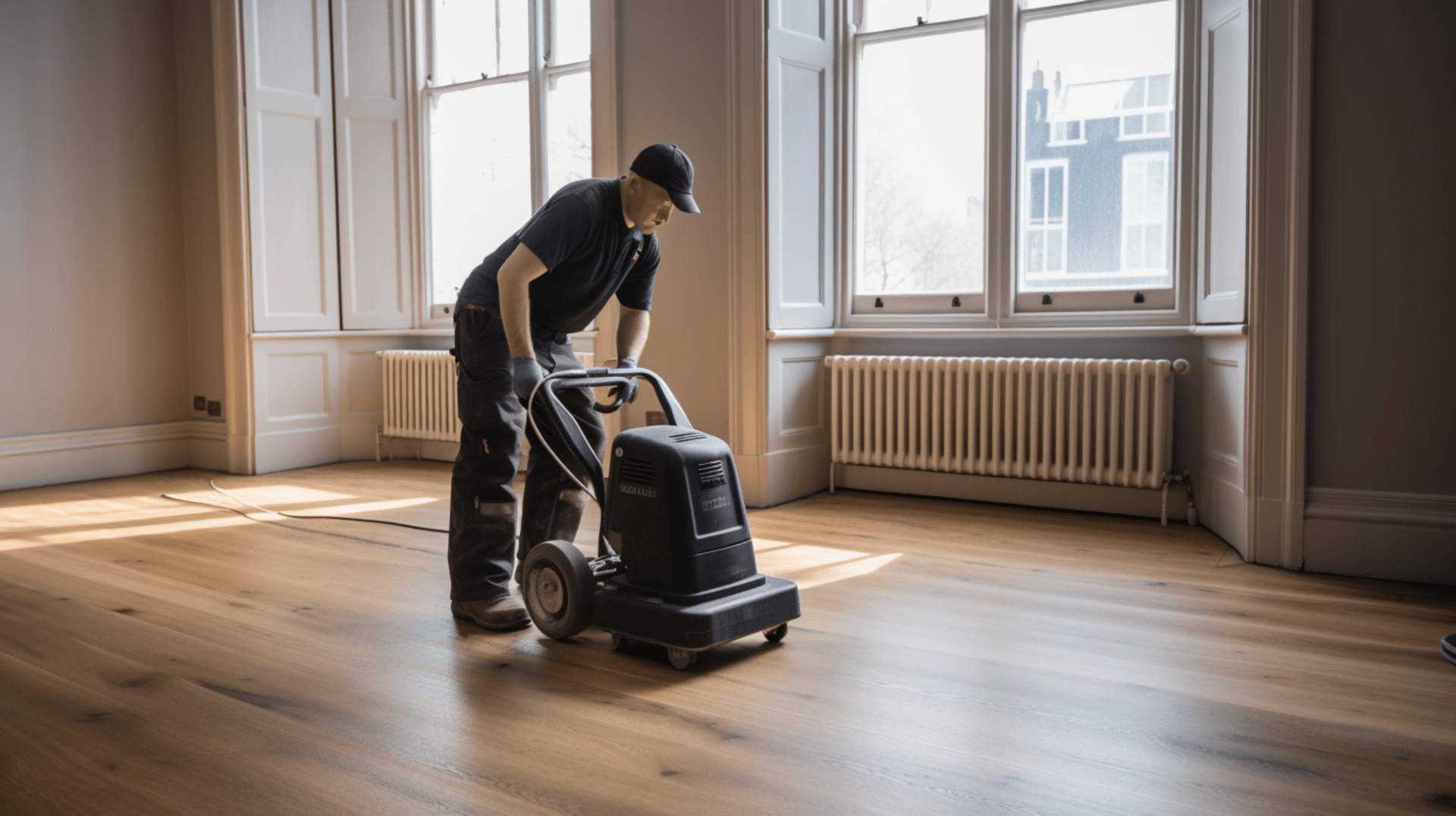
Maintaining a sanded and finished wooden floor is essential to ensure its longevity and beauty. Here are some tips to help you keep your floor looking its best:
-
Regular Cleaning: Sweep or vacuum the floor regularly to remove dirt and debris. Use a damp mop with a wood floor cleaner specifically designed for the type of finish on your floor. Avoid using too much water, as this can damage the finish.
-
Protective Measures: Use protective pads or furniture coasters under furniture legs to prevent scratches. Place mats or rugs at entrances to reduce the amount of dirt and debris tracked onto the floor. Avoid using harsh chemicals or abrasive cleaners, as these can damage the finish.
-
Regular Maintenance: Inspect the floor regularly for signs of wear and tear. Address any damage immediately to prevent further issues. Depending on the type of finish, you may need to reapply a protective coating every few years to maintain the floor’s appearance and durability.
GJP Floor Sanding can assist in the maintenance of your wooden floor. Our experienced team can provide professional advice on the best cleaning and maintenance products to use, as well as the frequency of reapplying the finish. We can also provide services such as floor sanding and refinishing to restore the beauty of your wooden floor. With our expertise and knowledge, you can ensure that your floor remains in top condition for years to come.
Expert Insights: Tips and Advice from GJP Floor Sanding Professionals

Expert Insights: Tips and Advice from GJP Floor Sanding Professionals
GJP Floor Sanding professionals have years of experience in the industry and can provide valuable insights on wooden floor sanding and maintenance. Here are some expert tips to help you keep your floor looking its best:
-
Regular Cleaning: Sweep or vacuum the floor regularly to remove dirt and debris. Use a damp mop with a wood floor cleaner specifically designed for the type of finish on your floor. Avoid using too much water, as this can damage the finish.
-
Protective Measures: Use protective pads or furniture coasters under furniture legs to prevent scratches. Place mats or rugs at entrances to reduce the amount of dirt and debris tracked onto the floor. Avoid using harsh chemicals or abrasive cleaners, as these can damage the finish. Additionally, consider using insulation materials such as glass wool, polyurethane (PUR), or polyisocyanurate (PIR) to reduce the amount of heat and moisture that can penetrate the floor.
-
Regular Maintenance: Inspect the floor regularly for signs of wear and tear. Address any damage immediately to prevent further issues. Depending on the type of finish, you may need to reapply a protective coating every few years to maintain the floor’s appearance and durability.
At GJP Floor Sanding, professionals ensure top-quality service by using the latest sanding equipment and techniques. Our dust-free technology minimizes disruption and mess, while our experienced technicians use overlapping sanding passes to ensure a thorough job. We also offer a range of finishes, from oil and wax to lacquer, and can provide professional advice on the best finish for your specific floor.
Based on our experience in the industry, GJP Floor Sanding can offer unique insights into the best practices for sanding and maintaining wooden floors. We understand the complexities of different floor types and finishes, and can provide tailored solutions to meet your specific needs. Whether it’s choosing the right abrasive, applying the finish correctly, or ensuring sufficient drying time, our expertise can help you achieve a beautiful and long-lasting result.
Ready to Transform Your Wooden Floor? Contact GJP Floor Sanding

Ready to Transform Your Wooden Floor? Contact GJP Floor Sanding
If you’re looking to transform your wooden floor, GJP Floor Sanding is the perfect choice. With over 20 years of experience, our team of experts can assess the condition of your floor and provide professional advice on the best sanding technique for your specific situation. We are familiar with the complexities of suspended timber ground floors and can ensure that the necessary requirements are met.
GJP Floor Sanding offers a range of services to meet your wooden floor transformation needs. These include floor sanding, refinishing, repairs, and maintenance. We also offer a range of finishes, from oil and wax to lacquer, and can provide professional advice on the best finish for your specific floor. Our dust-free technology minimizes disruption and mess, while our experienced technicians use overlapping sanding passes to ensure a thorough job. We can also provide advice on the best insulation materials to use, such as glass wool, polyurethane (PUR), or polyisocyanurate (PIR), and can help seal the gaps between the floorboards and along the skirting to reduce draughts.
To get in touch with GJP Floor Sanding, you can visit our website at www.laegler.com. We provide additional information on our machines, abrasives, accessories, and videos to help you make an informed decision. You can also find downloads such as spare parts lists, L?GLER? Direkt, and a program overview of our Premium Sanding Technology PST.
When choosing GJP Floor Sanding, you can be confident in our expertise and professionalism. We are fully insured and licensed, and our staff are experienced and qualified. We have a proven track record of successful projects and a portfolio of satisfied customers. With our competitive rates and transparent breakdown of costs, you can trust GJP Floor Sanding to deliver a high-quality service for your wooden floor transformation.
